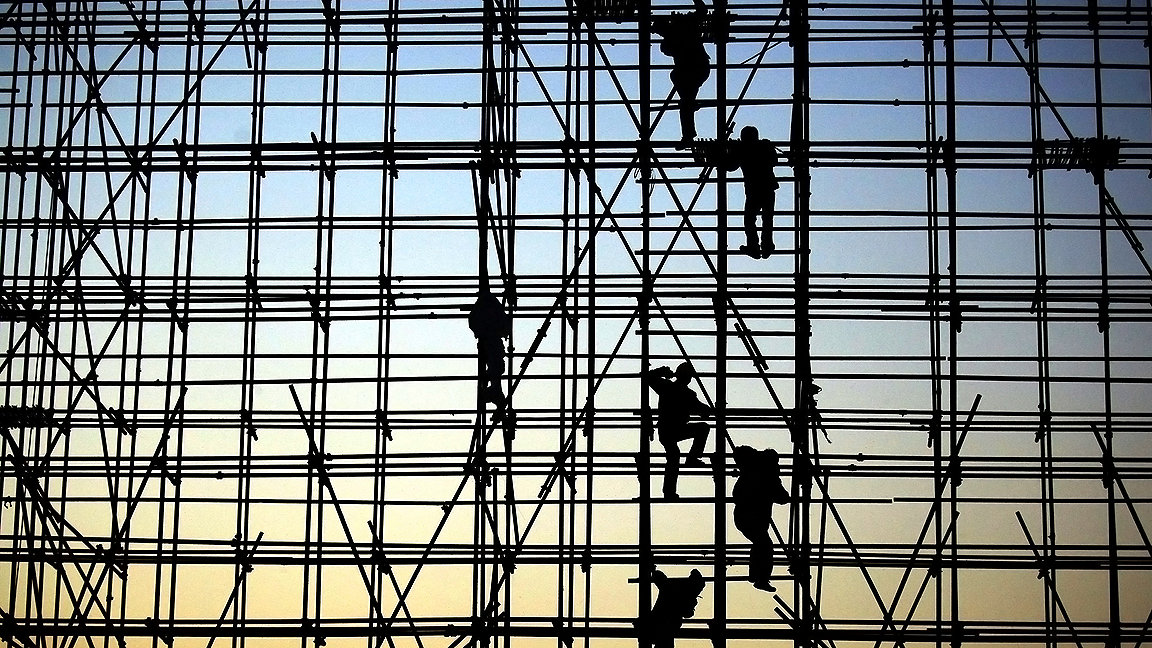
The dangers of working at height are a familiar concern for scaffolders, but over the past couple of years it was the vertigo-inducing high cost of materials and a chronic undersupply of labour that arguably gave firms the most cause for concern.
Rising inflation and supply chain issues exacerbated by factors such as Brexit and the pandemic made scaffolders’ core materials – timber boards and steel tubes – significantly more expensive, peaking at double the expected rate, and intensified materials shortages.
Fast forward to autumn 2022, and additional challenges, including a growing cost of living crisis and a spike in energy prices triggered by Russia’s war in Ukraine, have made market conditions even more unpredictable and challenging.
With little option but to absorb increased costs, eating into already slim margins, firms must also grapple with a lack of clarity on future costs. Shifting project starts and delays also complicate the bidding process and damage their competitiveness.
Tricky conditions
Scaffolders are reliant on timber boards and steel tubes to carry out their work and both products have been hit by extreme price volatility and supply issues over recent months.
An imbalance in the global supply and demand for softwood lumber, used to make timber boards, caused prices to skyrocket by an eye watering 113% in the UK in 2021, resulting in elevated market prices. This left many firms with the unenviable dilemma of whether to stockpile boards or hold out for a downward move on prices.
Steel prices also rose higher in 2021 than at any time since the credit crunch (2007-2008) and were again pushed higher in 2022 by inflationary pressures and rising electricity costs.
“Scaffolders have been at the centre of an inflationary storm around new and replacement materials over the past 12 months because steel and timber were the two most inflationary materials,” says Simon Rawlinson MRICS, head of strategic research and insight at Arcadis. “Furthermore, because scaffolding is a fairly commoditised market, very competitive with lots of players, it was harder to pass on these additional costs,” he adds.
“To say that the last year has been alarming is an understatement,” says David Brown, managing director of IBN Scaffold Access Ltd and vice president of the National Access and Scaffolding Confederation (NASC). “It made us look at what our options were. Purchasing materials became the least favourable option, which meant looking down the hire route.” IBN is fortunate in having a large stock of its own materials, he adds, putting it in a better position to weather the storm.
As costs rose, access to materials also became an issue for the sector. More than three quarters (78%) of tradespeople have struggled to source the materials they need for work in the past 12 months, according to a survey by IronmongeryDirect published in August. Timber and steel are listed as two of the top three most difficult products to find, after paint.
In a slightly more upbeat market analysis, the Construction Leadership Council (CLC) said in September that product availability is “broadly improving” in the UK. Steel supply has improved, it said, however there are concerns as the EU has “completely filled its quotas from non-EU countries.”
Skills gap
Labour and skills shortages are widespread throughout the UK construction sector, with a total of 217,000 extra workers required to meet demand by 2025, according to the latest figures from the Construction Skills Network.
The scaffolding and access sector employed 22,500 workers at the end of 2021 and has been particularly hard hit. The profession was highlighted, alongside carpenters, welders and electrical engineers, as worst affected by job shortages in construction in a recent report by the Confederation of British Industry (CBI).
Several factors have contributed to the issue – the pandemic led many workers to reassess their personal situations and pursue different careers. According to Helen Gawor, strategy director at GKR Scaffolding, many chose to move to smaller businesses, potentially closer to home, to get away from the intensity of work on larger projects and related pressures. “We’ve lost workers to those sorts of businesses, not our competitors,” says Gawor.
The cost of employing migrant workers skyrocketed after Brexit as employers faced increased red tape, visa issues and costs of up to £10,000 to employ a single EU worker. Furthermore, older workers continue to retire at a rate not matched by the recruitment of younger employees.
“Scaffolders have been at the centre of an inflationary storm” Simon Rawlinson MRICS, Arcadis
Bringing a new generation into the industry
It takes three years to become a fully trained scaffolder, so finding a quick solution to the problem is difficult. Some specialists are refocusing on graduate trainee and apprenticeship programmes to bring a new generation into the industry. NASC is supporting several initiatives designed to fill the gaps, including the government Kickstart Scheme set up to create new jobs for 16-to-24-year-olds at risk of long term unemployment.
According to Sarah Philips, finance manager and company secretary at NASC, over 160 youngsters have been placed with NASC members so far. “We are also developing strong links with the armed forces and creating routes for people to move into the scaffolding industry as they leave,” she says.
Moving away from reliance on self-employed workers to direct employment is seen by some in the sector as key to building a more robust workforce for the future. “If you have a workforce that is only self-employed, you don’t have an apprenticeship programme and you don’t invest in training, you’re creating a transient workforce and not investing in future skills,” says Gawor. She acknowledges that this transition is difficult given current high levels of wage inflation for self-employed labour. “The government, the industry and principal contractors should be doing more to encourage direct employment, which helps create a safer workforce, better standards and better buy-in,” adds Gawor.
“Direct employment is our preferred way to go,” says Brown. “Because we’ve trained operatives, you know what they are capable of, it also gives them job security, and benefits such as pensions and sick pay.”
“To say the last year has been alarming is an understatement” David Brown, IBN Scaffold Access Ltd
Path ahead
The combined impacts of material cost inflation, material shortages and labour shortages have started to bite in the scaffolding sector, but what are the prospects going into 2023?
Steel production is energy intensive and directly impacted by oil and gas prices. The ongoing war in Ukraine and Russia’s decision to shut down the Nordstream 1 gas pipeline in early September has raised fears of widespread factory shutdowns on the continent, which could further stem supplies to the UK.
The survey by IronmongeryDirect found that 25% of scaffolders have had to delay work in the past year due to materials shortages, a challenge “that could have a serious impact on their finances if it continues.”
However, IBN’s Brown asserts that other trades are responsible for delays on projects rather than scaffolders. “We seem to be waiting for steel erectors or roofers. We’ve been told we can’t dismantle scaffolding because windows still need to be fitted or that we can’t start a project because the steelworks are not on site.”
Figures from Arcadis revealed total construction orders falling by 10.45% in Q2 on the previous three months, the largest quarterly fall since Q4 2020 And the Office of National Statistics said there was evidence from firms that new orders are starting to slow, likely driven by the cost of living crisis for households and businesses.
Shifting project starts and delayed timelines on projects already underway make it harder for scaffolders, and indeed others in the industry, to forecast what materials will be needed when, with price volatility adding to confusion over when is the optimum time to purchase.
“Nobody really knows what’s going to happen next,” says Gawor. “Glenigan is predicting a slippage of 12 to 18 months between project sign off and project starts, and if that’s the case throughout next year it will affect everybody. The discussions we’re having with our clients are leading us to believe that we should expect it,” she concludes.
“The government, the industry and principal contractors should be doing more to encourage direct employment” Helen Gawor, GKR Scaffolding

Is the construction industry at full steam?
Highlights of the latest RICS Construction Monitor
Read more

